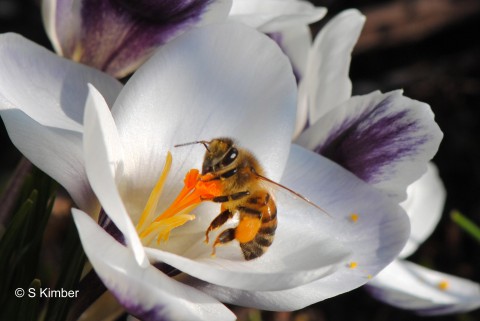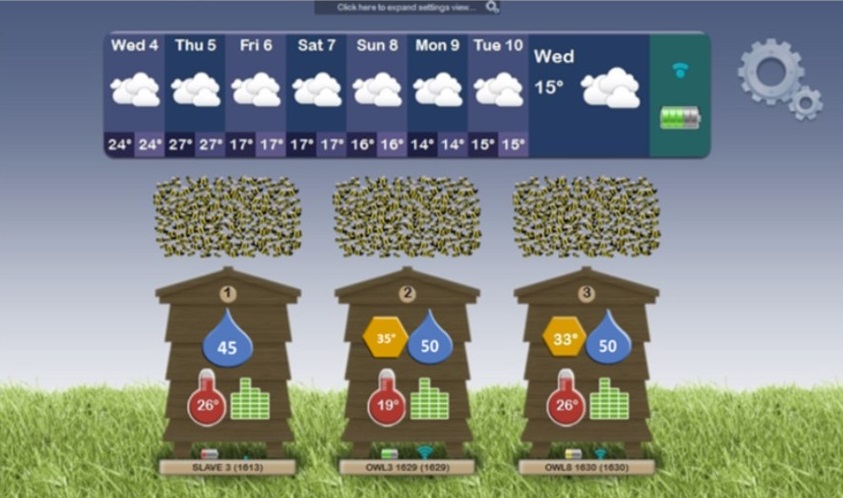- Stay Connected
 Abraham Lincoln
If given the truth, the people can be depended upon to meet any national crisis...
Abraham Lincoln
If given the truth, the people can be depended upon to meet any national crisis...
 Guildford news...
for Guildford people, brought to you by Guildford reporters - Guildford's own news service
Guildford news...
for Guildford people, brought to you by Guildford reporters - Guildford's own news service
Beekeeper’s Notes: Technology In The Hive
Published on: 1 Jun, 2019
Updated on: 30 May, 2019
Hugh Coakley keeps bees in Worplesdon
We hear about the internet of things in the workplace and in the home. Not surprisingly and not before time, it is spreading slowly to the humble beehive as well.

Beautiful photograph of a bee taking nectar and pollen from a white snowdrop.
Surrey beekeeper David Parker has written in this month’s beekeeping magazine about what is available now on the technology front and how it can be used.
What is measured is simple enough; weight, humidity, temperature, audio and movement inside the hive and weather and video images outside. And if you could use this information to know what is happening in your hives, all on one dashboard and without disturbing the bees or leaving the house, that would be great.
The weight, for instance, can tell you if the bees are bringing in nectar and when the nectar flow stops. That’s important as it will dictate to some degree when a beekeeper will take honey from the hive.

An automated data collection system for beehives means that you can look at and compare your hives without leaving the house.
It can also record if a hive is being robbed. Bees are cheeky b***ers and if they see an opportunity to nip in and take free honey from another, generally weaker colony, they will be right there.
Temperature can tell you a lot as well. During the time when the queen is laying, the bees will keep the hive between 32 and 35 degrees C. But it goes down into the 20s when she is not.
The sounds in the hive can possibly help detection of disease. Hives with nosema, where bees suffer from diarrhoea, sound different from a healthy hive.
The aim of course is to give the beekeeper lots of data to improve the management of the colony, hopefully to the advantage and for the health of the bees.
NHS are moving towards a level of automation in diagnosis and on their helpline 111. Why not with bees?

A swarm on the wall at The Spike Heritage Centre, Guildford. It was collected and is really thriving but it would have been very useful to have had an automated warning a couple of weeks beforehand to prevent it.
It would be brilliant for instance, to reliably predict swarm preparation in enough time to do something about it. Now that would be something.
David points out that one day, we could even avoid the weekly hive inspection, maybe only inspecting two or three times a year. It would mean less disturbance for the bees but many beekeepers would miss them. Working with the bees is the best bit for many.
More technology is almost inevitable and some degree of automation is likely. But it will take time.













Recent Comments